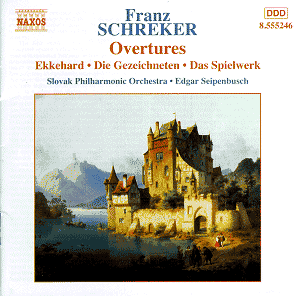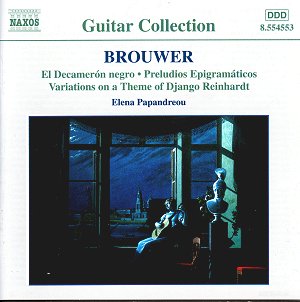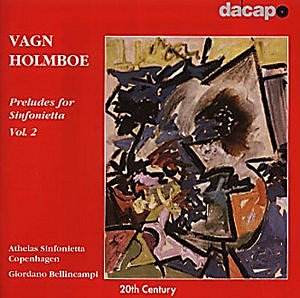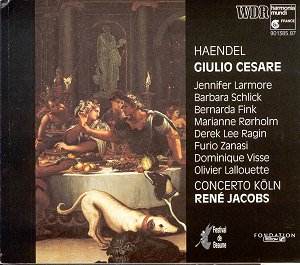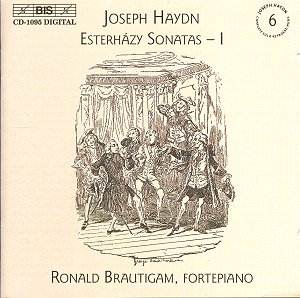 Composer: Franz Joseph HAYDN
Composer: Franz Joseph HAYDN
Works: Esterházy Sonatas, Volume 1 (Complete Solo Keyboard Music Volume 6). Keyboard Sonatas – No. 35 in A flat, Hob. XVI/43; No. 36 in C, Hob. XVI/21; No. 37 in E, Hob. XVI/22; No. 38 in F, Hob. XVI/23
Performers: Ronald Brautigam (fortepiano)
Recording: Recorded in Länna Church, Sweden in August 1999 [DDD]
Label: BIS
Franz Joseph Haydn, often hailed as the “father of the symphony” and “father of the string quartet,” also carved an indelible mark on the solo keyboard repertoire. The present collection, the first volume of the Esterházy Sonatas performed by Ronald Brautigam, showcases Haydn’s evolution as a composer during his tenure at the Esterházy court. These sonatas, particularly Nos. 36-38, were published in 1774 for Prince Esterházy, revealing the composer’s deft handling of form and emotional depth. Notably, the inclusion of the disputed No. 35 in A flat adds a layer of intrigue, as its authorship remains a point of contention among scholars.
Brautigam’s interpretation is marked by a refined sensitivity and an awareness of the historical context that informs Haydn’s stylistic choices. On a McNulty copy of a late eighteenth-century Walter fortepiano, he navigates the complexities of these sonatas with an engaging touch. The absence of a slow movement in No. 35 is particularly striking; Brautigam compensates for this by infusing the brief Menuetto and Trio with a vibrant character that enhances the surrounding Allegro and Rondo. His ability to highlight the registral shifts in this movement demonstrates an impressive command of color and texture, elevating what could otherwise be a straightforward piece into a delightful listening experience.
The sonatas from the Esterházy collection exemplify Haydn’s mastery over expansive emotional ranges, particularly in the slow movements. Brautigam’s approach to Sonata No. 36 is especially noteworthy; he maintains clarity in the two-part textures of the opening Allegro moderato, ensuring that the thematic material never feels stagnant. His use of small tempo fluctuations injects a sense of life into the music, echoing Haydn’s own playful spirit. The Andante that follows reveals Brautigam’s remarkable sensitivity, as he delves into the introspective nature of the music, allowing its lyrical beauty to unfold organically.
Sonata No. 38 stands out for its contrasting moods, and while Joanna Leach’s recent recording on a Stodart square piano offers historical insights, Brautigam’s interpretation is decidedly more resonant. His Adagio possesses an improvisatory quality that captures the essence of Haydn’s emotional landscape, while his Presto finale radiates joy and exuberance. Brautigam’s articulation and rhythmic precision in this movement not only underline the piece’s inherent liveliness but also reflect a deep understanding of Haydn’s stylistic nuances, reminiscent of Alfred Brendel’s esteemed interpretations.
The engineering quality of this recording by BIS, under the expertise of Ingo Petry, merits commendation. The fortepiano’s tonal colors are captured with remarkable clarity, allowing the listener to appreciate the subtleties of Brautigam’s playing. The acoustics of Länna Church provide a warm yet vibrant resonance that enhances the listening experience, ensuring that each note and nuance is crisply delineated.
Brautigam’s scholarly approach, grounded in the Wiener Urtext edition, brings forth the multifaceted nature of Haydn’s music, revealing layers of wit, charm, and emotional depth. This disc is not merely a collection of sonatas; it is an invitation to experience Haydn’s world through a lens of informed artistry. The combination of thoughtful interpretation, technical prowess, and high-quality sound engineering culminates in a recording that stands as a significant contribution to the ongoing exploration of Haydn’s keyboard works. Enthusiasts of the genre will find this volume a rewarding addition to their collections, offering both pleasure and insight into one of classical music’s enduring figures.
